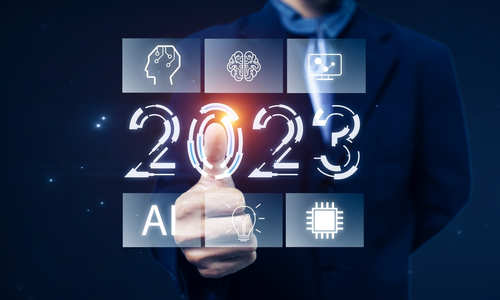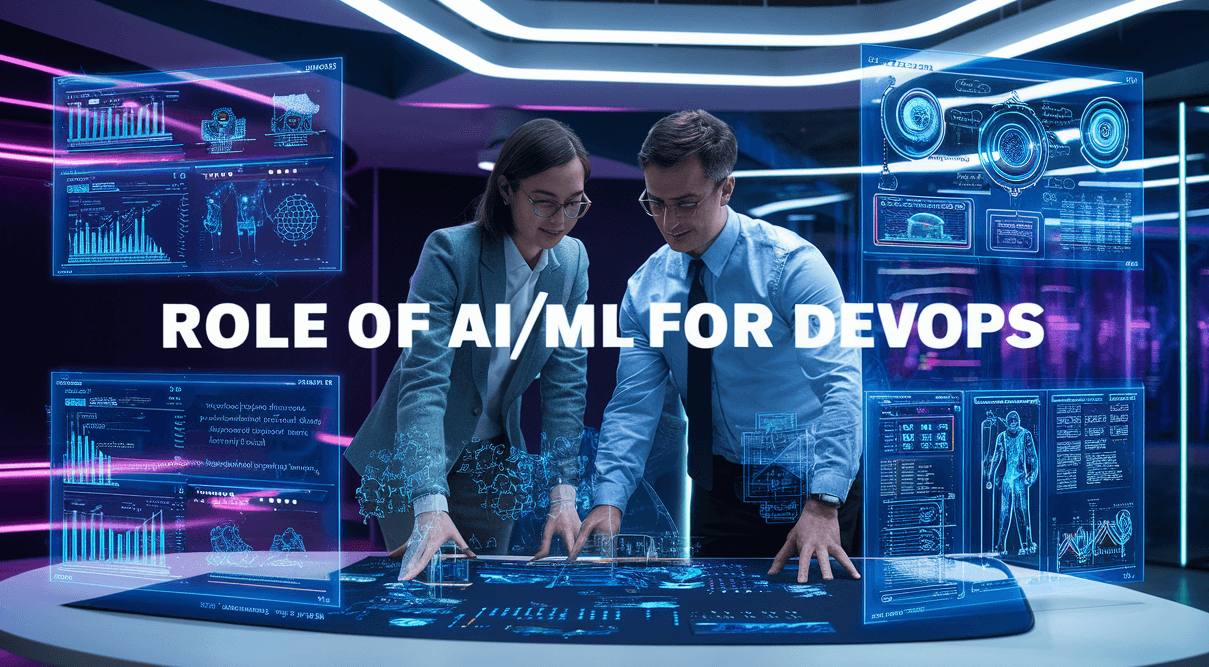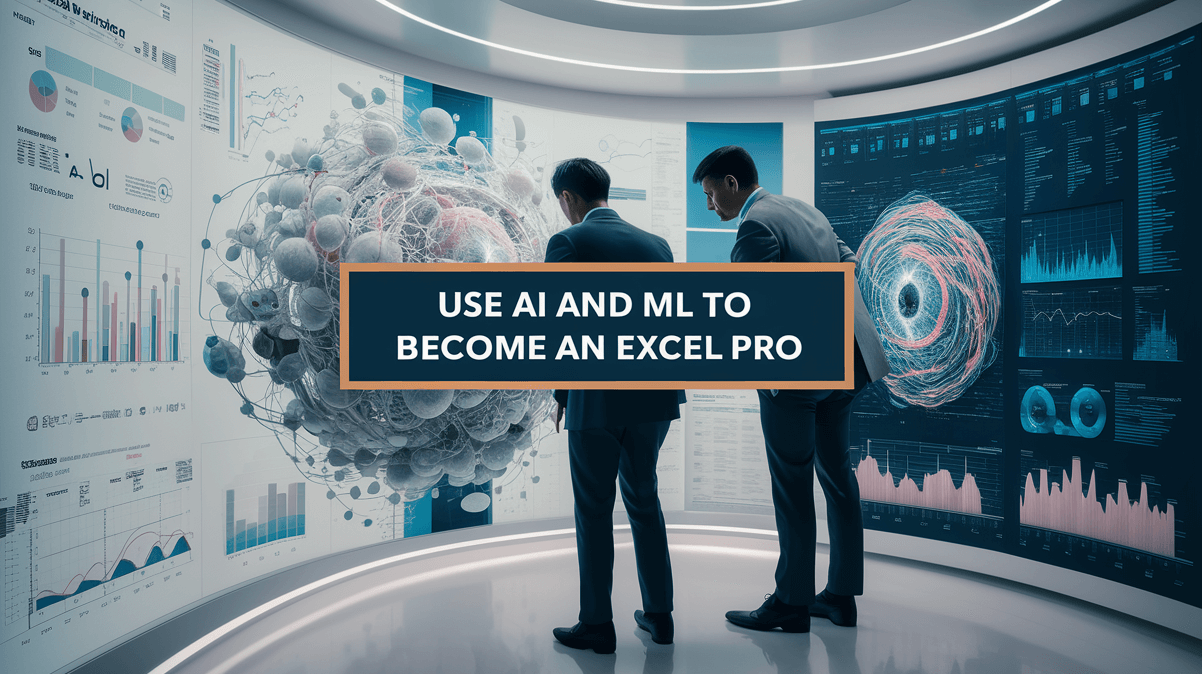Artificial intelligence is advancing rapidly, reshaping how people work and interact with technology. Smart assistants now anticipate user needs with greater accuracy. AI-powered vehicles and delivery systems operate with improved precision. By 2026, organizations widely adopt multimodal and generative AI to streamline operations. Edge AI supports instant, real-time decision-making across industries. Customer interactions grow more personalized through adaptive learning models. Businesses increasingly rely on AI as a core driver of digital growth. Emerging trends continue to transform industries and influence the future.

Jump ahead to
Top AI Trends for 2026
In recent years, artificial intelligence has expanded rapidly, becoming a central force in technological progress. Its growth shows no signs of slowing, with innovations emerging at an unprecedented speed. As 2026 approaches, several important predictions highlight how the AI industry is set to evolve further and influence a wide range of sectors.
AI-focused cybersecurity
Cybersecurity has become a top priority for organizations as cyberattacks continue to rise sharply each year. By 2026, more businesses are expected to integrate AI-driven solutions into their security frameworks. Advanced systems will analyze vast volumes of log data in real time, using intelligent models to detect unusual activity and alert security teams immediately. AI will play a crucial role in identifying threats, automating incident detection, and keeping pace with increasingly sophisticated cybercriminals.
By integrating intelligent automation into security systems, organizations may drastically minimize the manual labor required to maintain the security of their systems. Using AI in cybersecurity can track and analyze user activity and improve security throughout the customer authentication process. This can aid companies in protecting their critical data and avoiding attackers.
AI for improvements in computer vision
Computer vision research in AI enables the extraction of useful information from digital images, videos, and other visual inputs. This helps to take action or make recommendations based on that information. Computers can identify things in images using machine learning (ML) models, and they may perform actions like unlocking a smartphone when they recognize a face.
In the healthcare sector, this AI-based technology is used to display and extract data. An AI-powered computer vision system may be trained to recognize cancers in an MRI picture. Furthermore, based on the patient’s particular circumstances, this could be utilized to assess medical images and recommend the best course of action.
AI with a focus on ethics
A primary priority in 2026 will be the creation of more moral and rational AI models. AI continues to have challenging legal and ethical issues. Deep fakes, biased algorithms, and out-of-date models are all worrisome indicators that legal frameworks need to be updated to keep up with the quickly expanding AI sector.
In the coming years, AI will influence critical decisions in areas such as hiring, legal processes, healthcare, and more. This makes biased data a serious concern, as it can produce unfair or discriminatory automated outcomes. By 2026, the long-standing “black box” challenge in AI is expected to receive greater attention. Organizations responsible for deploying AI systems will intensify efforts to ensure these technologies provide transparent explanations for their decisions and the data behind them.
Generative AI
For organizations, generative AI provides new tools to enhance content creation. In addition to reducing turnaround time, generative AI aids in the creation of a range of content, including literary, visual, and auditory works. GPT-3 and other generative AI models aid in the production of interesting academic, literary, and non-fictional material. After obtaining “training” from human interactions and stuff on the internet that was produced by humans, it can respond to queries and carry out commands.
DALL-E is another generative AI that uses platforms that are created by text-to-video AI to produce animated art, especially human-like visuals with voices. This tool is beneficial for innovative marketing and branding. Furthermore, the media sector is being revolutionized by generative AI. There are countless uses, including developing new movies and restoring existing ones in high definition, enhancing special effects capabilities, and creating avatars for the metaverse.
Human and AI collaboration
AI will be widely used this year and into the future for everything from content generation to automated testing, deployment, and problem-fixing. Cobots, or collaborative robots, are characterized by the degree to which AI supports a variety of human activities and will continue to advance. According to industry experts, businesses will increasingly use AI-equipped devices to carry out repetitive and physically demanding activities.
As a result, human employees will be able to concentrate more on carrying out specialized and imaginative jobs like design and user experience. This also increases the output and effectiveness of the team. By the end of the decade, it is anticipated that AI will play a substantial role in software development. In contrast to today’s, 80% of the workforce will use intelligent AI products on a regular basis by 2030. However, in order to achieve this, teams must concentrate on fostering machine and human collaboration.
Voice and language-driven intelligence
Another major area of advancement in AI is the processing and interpretation of human voices. This technology has expanded quickly in recent years and is expected to continue its strong growth through 2026. Voice-based systems are now widely used in digital assistants, social platforms, content creation tools, and news media applications. The voice and speech recognition market is also projected to see significant expansion, reaching billions in value by 2029.
Speech recognition remains a major branch of artificial intelligence, enabling technology to interpret and translate human voices across multiple languages. Well-known examples include Apple’s Siri, Amazon’s Alexa, Microsoft’s Cortana, and Google Assistant. The rise of remote work has also led to a significant increase in the use of smart speakers at home. By 2026, speech recognition is expected to play an even greater role in enhancing and streamlining business operations.
Conclusion
AI has progressed from simply being intriguing to having a big impact on businesses and customers. It can boost productivity, alleviate the effects of the labor shortage, and encourage companies to develop new sources of income. Although the available AI tools and technologies appear promising, they will undoubtedly go further in the future. In 2026, we will see a variety of developments in artificial intelligence (AI) and other cutting-edge technologies. Professionals can enroll in Artificial Intelligence Expert to learn about the most recent developments in AI. The training helps professionals develop the abilities necessary to establish their careers in the booming sector of AI.
Summary
Artificial intelligence is transforming industries by enabling smarter decision-making, automation, and real-time analytics. By 2026, AI technologies such as advanced voice recognition, generative models, and intelligent assistants are widely integrated into businesses and everyday life. Organizations increasingly depend on AI to improve efficiency, personalize customer experiences, and detect emerging threats. Transparency and ethical AI have become essential to ensure fair and accountable outcomes. Edge AI allows faster, secure processing directly on devices, enhancing responsiveness. As AI becomes a key driver of growth, professionals with practical AI skills are in high demand. Enroll in an AI certification program to develop the expertise needed to excel in this rapidly evolving field.
FAQs on AI Trends in 2026
1. What is the current trend in AI?
AI focuses on generative models, advanced voice recognition, edge computing, and ethical, explainable AI. These trends enhance automation, personalization, and real-time decision-making.
2. What are the 7 main types of AI?
The seven main types are Reactive Machines, Limited Memory, Theory of Mind, Self-Aware AI, Narrow AI, General AI, and Super AI. Each type differs in capability and intelligence level.
3. How will AI transform business operations?
AI automates repetitive tasks, improves efficiency, and provides insights for faster decision-making, boosting productivity across industries.
4. What is generative AI and why is it important?
Generative AI creates text, images, and multimedia content, enabling businesses to innovate and produce content faster.
5. How does AI enhance cybersecurity?
AI detects threats, automates responses, and predicts attacks in real time, protecting systems from cyber risks.
6. What is edge AI and its advantage?
Edge AI processes data locally on devices, offering faster insights and stronger privacy compared to cloud-based systems.
7. How is AI improving voice and speech recognition?
AI recognizes multiple languages, accents, and contexts, powering smarter assistants and advanced customer support tools.
8. Why is ethical AI critical in 2026?
Ethical AI ensures transparency, fairness, and unbiased decision-making, reducing discrimination and increasing trust in automated systems.
9. What role will AI play in healthcare?
AI supports diagnostics, personalized treatment, and patient monitoring, improving outcomes while minimizing human error.
10. How does AI facilitate human–AI collaboration?
AI handles repetitive or data-intensive tasks, allowing humans to focus on creative and strategic work.
11. Can AI certification help professionals in 2026?
Yes, AI certifications validate skills, enhance credibility, and help professionals stay competitive in a rapidly evolving AI-driven job market.
12. Which industries are adopting AI the fastest?
Finance, healthcare, retail, manufacturing, and logistics are leading AI adoption for automation, analytics, and customer personalization.



